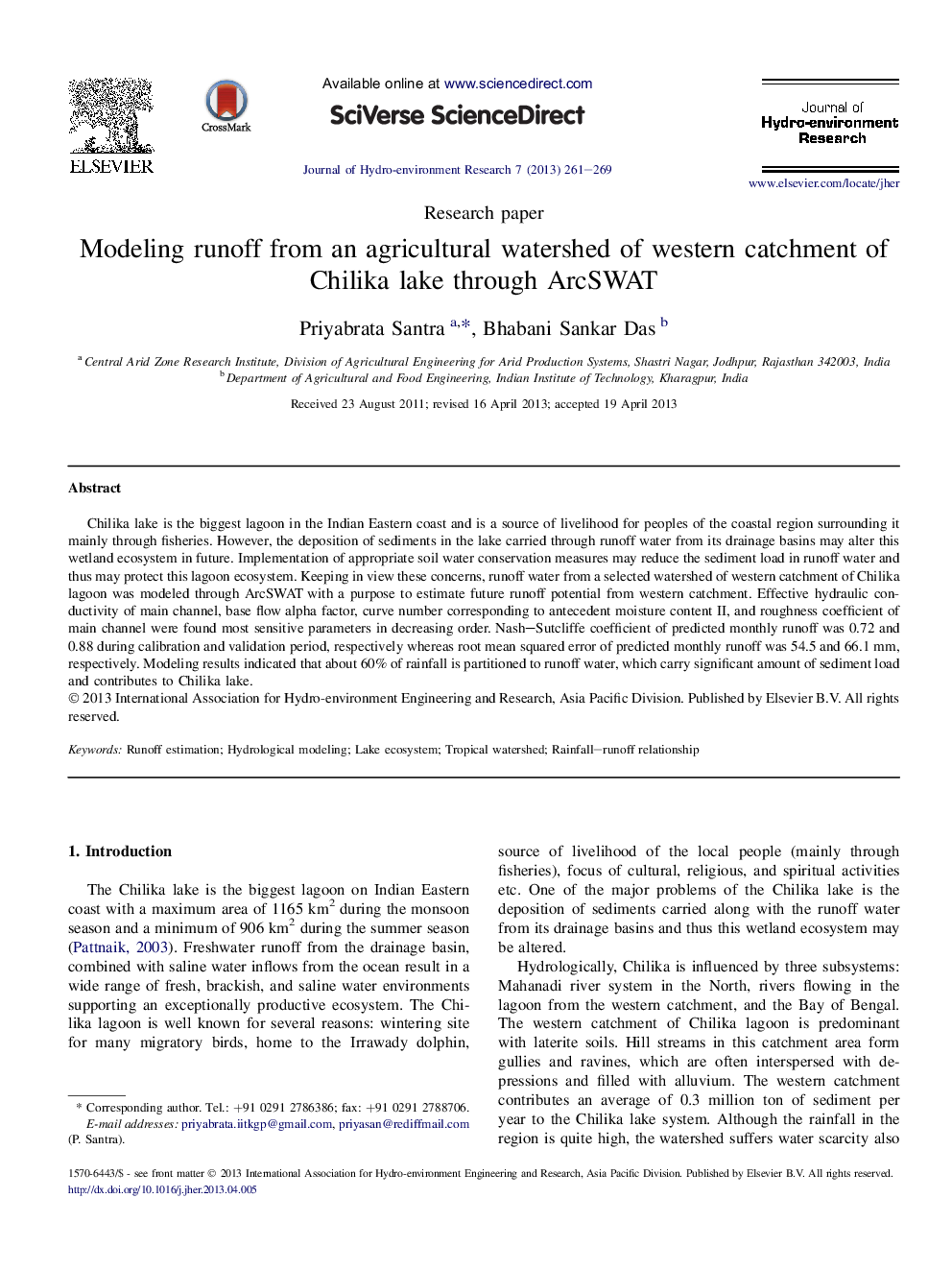| Article ID | Journal | Published Year | Pages | File Type |
|---|---|---|---|---|
| 4493847 | Journal of Hydro-environment Research | 2013 | 9 Pages |
Abstract
Chilika lake is the biggest lagoon in the Indian Eastern coast and is a source of livelihood for peoples of the coastal region surrounding it mainly through fisheries. However, the deposition of sediments in the lake carried through runoff water from its drainage basins may alter this wetland ecosystem in future. Implementation of appropriate soil water conservation measures may reduce the sediment load in runoff water and thus may protect this lagoon ecosystem. Keeping in view these concerns, runoff water from a selected watershed of western catchment of Chilika lagoon was modeled through ArcSWAT with a purpose to estimate future runoff potential from western catchment. Effective hydraulic conductivity of main channel, base flow alpha factor, curve number corresponding to antecedent moisture content II, and roughness coefficient of main channel were found most sensitive parameters in decreasing order. Nash-Sutcliffe coefficient of predicted monthly runoff was 0.72 and 0.88 during calibration and validation period, respectively whereas root mean squared error of predicted monthly runoff was 54.5 and 66.1Â mm, respectively. Modeling results indicated that about 60% of rainfall is partitioned to runoff water, which carry significant amount of sediment load and contributes to Chilika lake.
Keywords
Related Topics
Life Sciences
Agricultural and Biological Sciences
Agricultural and Biological Sciences (General)
Authors
Priyabrata Santra, Bhabani Sankar Das,
